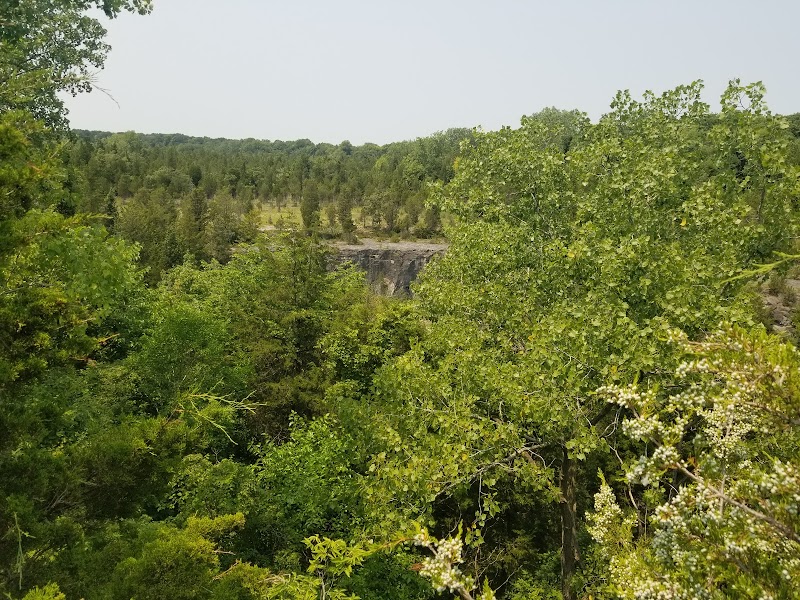
Wayne County Birding Festivals: A Practical Guide to Brownstown’s Feathered Adventure
Wayne County Birding Festivals in Brownstown, Michigan invite you to explore diverse habitats along the Detroit River, ideal for spotting both common and rare birds. This practical guide will prepare you for accessible trails, seasonal highlights, and expert tips to enhance your birdwatching adventure.
Pack for Muddy Trails
Brownstown's wetland edges get soggy after rain; waterproof boots or fast-drying shoes keep your feet dry and your pace steady.
Bring Binoculars and Field Guide
Quality optics paired with a regional bird guide maximize your ability to identify and enjoy species on the move.
Start Early for Best Birding
Bird activity peaks at dawn; begin hikes early to catch warblers, raptors, and waterfowl at their most active moments.
Hydrate but Travel Light
Use a hydration pack or bottle easy to handle to stay refreshed without disrupting the walk’s flow or your birdwatching focus.
Wayne County Birding Festivals: A Practical Guide to Brownstown’s Feathered Adventure
Wayne County Birding Festivals in Brownstown, Michigan, offer a focused dive into avian worlds where enthusiasts gather to connect with the rich birdlife that claims the area as its seasonal home. Located along the shores of the Detroit River, Brownstown's natural habitats form critical stopovers and breeding grounds that call out to both casual bird watchers and dedicated ornithologists alike.
The festival trails weave through wooded corridors, wetland edges, and riverside paths that fluctuate between flat, easy terrain and gently rolling landscapes. The hikes average 2 to 5 miles per outing with modest elevation changes, making them accessible but engaging enough to keep you alert to rustling leaves and sudden birdcalls. Expect forested paths where oaks and maples lean in close, their branches daring you to look up as songbirds dart through shafts of morning light or steelhead swallows skim the water’s surface.
Practical planning sharpens your experience: sturdy footwear is non-negotiable on muddy edges and leaf-strewn trails; hydration packs with easy sip access keep you ready without stopping the rhythm; and binoculars tuned before arrival mean more sightings and less fumbling. Mornings crack open with the most activity—so target your early hours here to catch warblers, herons, and perhaps the elusive peregrine falcon poised like a shadow overhead.
The festivals are rarely overcrowded, fostering a relaxed connection with nature. Guides lead groups steadily, pointing out distinct calls and subtle plumage details, creating an educational rhythm that matches the terrain’s own pace. For all levels, this adventure invites respect for the bird species fiercely thriving in this complex ecosystem, where winds push water and wings in equal measure.
Whether you come for the festival’s community spirit or the thrill of the chase, Brownstown’s Wayne County Birding Festivals offer an approachable challenge, balancing the thrill of discovery with the practicality of preparation. With accessible trails, expert guides, and an inspiring feathered cast, the experience bridges enjoyment with insight, creating a birding adventure that rewards both eye and mind.
Nearby Trips
All Adventures
Boat Charters
Water Activities
Adventures near Brownstown, Michigan
Discover the unique and memorable adventures that make Brownstown, Michigan special.
Frequently Asked Questions
What types of birds can I expect to see at the Wayne County Birding Festivals?
Visitors can spot a wide variety ranging from migratory songbirds like warblers and vireos in spring to raptors such as hawks and falcons during fall migration. Waterfowl including ducks and herons are common year-round, especially near the Detroit River’s wetlands.
Are the festival trails suitable for families with children or beginner bird watchers?
Yes. The trails vary from easy to moderate, with mostly flat terrain and well-marked paths that make them accessible for families and beginners. Festival guides often tailor group walks to different skill levels.
Is there parking available near the festival trailheads in Brownstown?
Most festival starting points have public parking areas within a short walk of the trails. It’s recommended to arrive early or carpool during busy weekends as spaces can fill up quickly.
What local wildlife besides birds might I encounter during the festival hikes?
Expect to see white-tailed deer cautiously crossing trails, red foxes slipping through forest edges, and an array of amphibians near wetland pools. Raptors and waterfowl also share their habitat with snapping turtles and muskrats along the waterways.
Are dogs allowed on the festival trails?
Due to wildlife sensitivities and trail conditions, dogs are generally discouraged during festival events. Check specific guidelines before attending. If allowed, dogs should always be kept on leash.
What is the best time of day for bird watching during the festivals?
Birds are most active in the cool, quiet hours after dawn. Festival walks typically start early in the morning to maximize sightings before midday warmth slows winged activity.
Recommended Gear
Waterproof Hiking Boots
Protect feet against wet, muddy terrain common near wetlands and riverbanks.
Compact Binoculars
Essential for detailed observation of distant birds without disturbing them.
Layered Clothing
Allows easy adjustment for temperature changes from early morning chill to midday warmth.
Insect Repellent
Helpful during warmer months to fend off mosquitoes and biting flies around wetland areas.
Local Insights
Hidden Gems
- "The overlook at Gibraltar Bay offers a quieter vantage point for watching raptors drift along thermal currents."
- "Hidden boardwalk extensions near Hines Park provide close encounters with shorebirds in less trafficked areas."
Wildlife
- "Keep an eye out for the striking Eastern Bluebird and the elusive Wood Thrush in wooded spots."
- "Winter often brings Rough-legged Hawks patrolling the skies above open fields."
History
"Brownstown sits along vital waterways historically used for trade and transport, shaping the wilderness areas that remain today as important bird habitats still recognized and protected."
